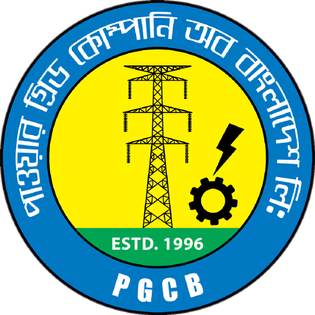Proposed solution
The south Asian country, Bangladesh, located in the heart of the Ganges-Brahmaputra-Delta has a very limited energy reserve; small amounts of oil, coal and countable natural gas reserves. The country suffers an internal energy struggle, as about 93% of the country’s power producing thermal plants are gas-based, but the gas is also needed for the industrial sector. The power sector in Bangladesh is highly dependent on fossil fuels, as natural gas and coal are the dominating sources for power generation in the country. About 62.9% of Bangladeshi generated electricity comes from natural gas, while 10% is from diesel, 5% comes from coal, 3% of heavy oil, and 3.3% is from renewable sources. But there is a continuous and rapidly widening gap between electricity supply and demand, therefore it is a major challenge for the energy sector in Bangladesh. Problems of Bangladesh’s electric power sector include high system losses, delays in completion of new plants, low plant efficiency, erratic power supply, electricity thefts, blackouts and shortage of funds for power plant maintenance. The country’s generation plants have been unable to meet system demand over the past decade.
For those reasons, our team has chosen the national grid sector in Bangladesh which is installed with a capacity of 25,514 MW as of
March 2022. We have planned on making a website which will show the current condition of BD power grid, generation mix,
environmental positive impact, carbon emission and cost analysis with a possible solution through the traditional scientific
implementations including large scale photovoltaic integration and combining solar power with coal fired power plants ( Coal-
solar hybrids, Coal natural gas co firing) for scaling down coal.
1. Modeling of BD Power System through Photovoltaic Integration
Photovoltaic (PV) array which is composed of modules is considered as the fundamental power conversion unit of a PV generator system. The PV array has
nonlinear characteristics and it is quite expensive and takes much time to get the operating curves of a PV array under varying operating conditions. In order to
overcome these obstacles, common and simple models of solar panels have been developed and integrated into many engineering software including
Matlab/Simulink. However, these models are not adequate for applications involving hybrid energy systems since they need a flexible tuning of some parameters
in the system and not easily understandable for readers to use by themselves. Therefore, our aim is to show the output characteristic curves of the given input of the
targeting solar power of the national grid of Bangladesh with the output power, current, voltage decreases though an accurate, reliable and easy-to-tune model of
photovoltaic array with the estimating cost analysis.
2. Combining solar power with coal fired power plants
Coal-solar hybrid:
This approach can replace a portion of coal demand by substituting its energy contribution via input from a solar field. During daylight operation, solar energy can be used to reduce coal consumption (coal-reducing mode). As solar radiation decreases during the latter part of the day, the coal contribution can be increased, allowing the plant’s boiler to always operate at full load. When solar radiation increases again, the process is reversed, with solar input gradually reducing that of coal. Alternatively, input from the solar field can be used to produce additional steam that can be fed through the turbine, increasing electricity output (solar boost).
Fig 1: The first coal-solar hybrid in the Cameo Generating Station
Coal natural gas co-firing: Another option attracting the interest of some power utilities is that of co firing natural gas in coal- fired boilers. This technique can be instrumental in improving operational flexibility and reducing emissions. It avoids the intermittency issues of renewables such as solar power, but clearly retains some of the disadvantages associated with fossil fuels in general. Both coal- and gas-based generation are vital in powering many of the world’s developed and emerging economies. Both are used to provide a secure and uninterrupted supply of electricity, needed to ensure that economies and societies can develop and prosper. In some countries, coal provides much of the power, whereas in others gas dominates. However, there are many instances where the national energy mix includes combinations of the two. Each brings its own well- documented advantages and disadvantages, but recent years have seen a growing interest in means by which these two fuels might be combined in an environmentally-friendly and cost-effective way.
Hypothesis
Implementing the PV integration will show the output characteristic curves of the given input of the targeting solar power of
the national grid of Bangladesh with the output power, current, voltage decreases. It is also robustly advantageous in
investigating the solar PV array operation from different physical parameters (series, shunt resistance, ideality factor, etc.)
and working condition ( varying temperature, irradiation and especially partial shadow effect) aspects with low power
output, a flexible tuning and a reasonable demand.
In the case of improving plant flexibility, these include combining coal with solar energy or natural gas. Our second
approach: Combining coal-firing with solar power plants has the potential to improve operational flexibility, moderate
plant costs and reduce carbon emissions.
Research Plan
To raise awareness which will allow us to gather the output results of our
scientific approaches, condition of Bangladesh national power grid, generation mix, environmental
positive impact, carbon emission, cost analysis and demand.
Furthermore, solar energy and fossil fuels are not adequate for applications involving hybrid energy
systems since they need a flexible tuning of some parameters in the system and not easily understandable
for readers to use by themselves. So, we have planned on modeling a large scale photovoltaic integration
to implement the specific input energy of MW power with a characteristics output curves, and as
mentioned in the proposed solution, through our carbon emission method by scaling down the coal
using solar hybrid and natural gas co-firing, we would be able to reduce carbon emission ( not
eliminating it) with the operation flexibility, moderate plant costs and demands.









